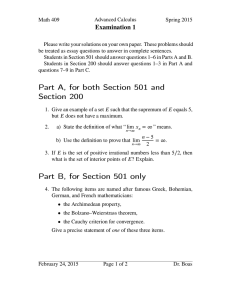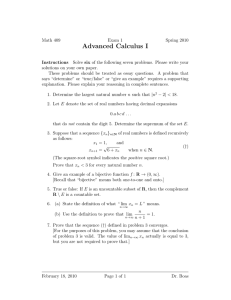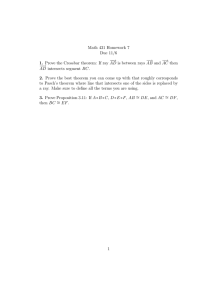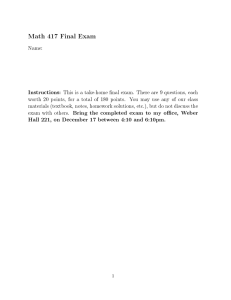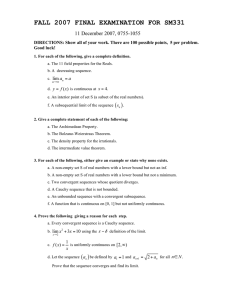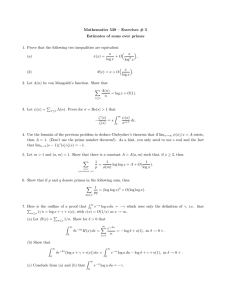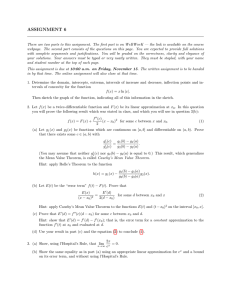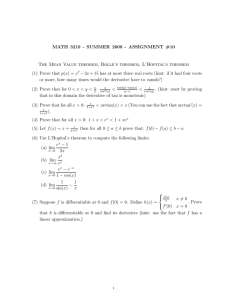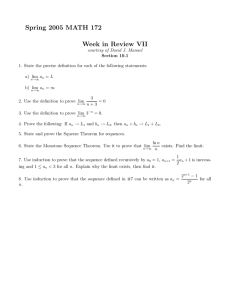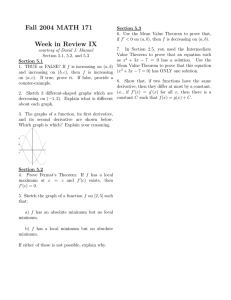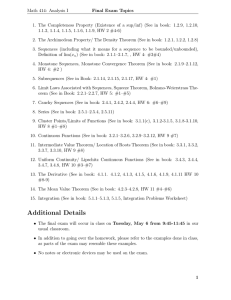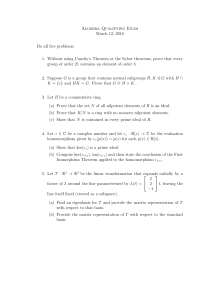Math 409 Examination 1 February 17, 2000
advertisement
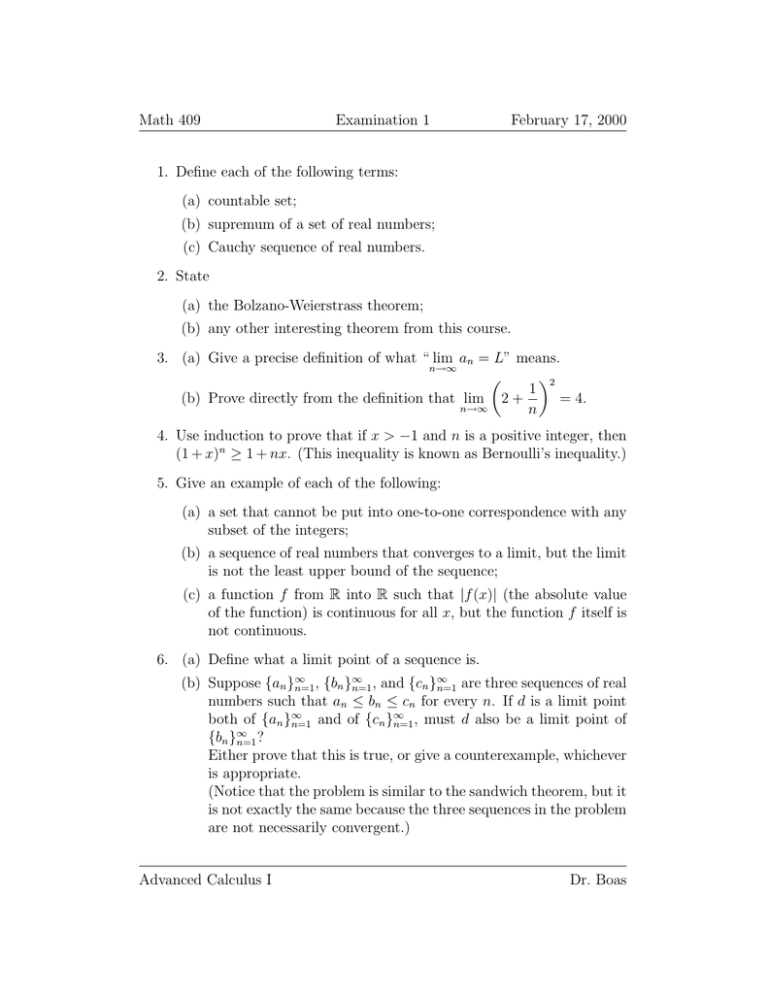
Math 409
Examination 1
February 17, 2000
1. Define each of the following terms:
(a) countable set;
(b) supremum of a set of real numbers;
(c) Cauchy sequence of real numbers.
2. State
(a) the Bolzano-Weierstrass theorem;
(b) any other interesting theorem from this course.
3. (a) Give a precise definition of what “ lim an = L” means.
n→∞
2
1
(b) Prove directly from the definition that lim 2 +
= 4.
n→∞
n
4. Use induction to prove that if x > −1 and n is a positive integer, then
(1 + x)n ≥ 1 + nx. (This inequality is known as Bernoulli’s inequality.)
5. Give an example of each of the following:
(a) a set that cannot be put into one-to-one correspondence with any
subset of the integers;
(b) a sequence of real numbers that converges to a limit, but the limit
is not the least upper bound of the sequence;
(c) a function f from R into R such that |f (x)| (the absolute value
of the function) is continuous for all x, but the function f itself is
not continuous.
6. (a) Define what a limit point of a sequence is.
∞
∞
(b) Suppose {an }∞
n=1 , {bn }n=1 , and {cn }n=1 are three sequences of real
numbers such that an ≤ bn ≤ cn for every n. If d is a limit point
∞
both of {an }∞
n=1 and of {cn }n=1 , must d also be a limit point of
∞
{bn }n=1 ?
Either prove that this is true, or give a counterexample, whichever
is appropriate.
(Notice that the problem is similar to the sandwich theorem, but it
is not exactly the same because the three sequences in the problem
are not necessarily convergent.)
Advanced Calculus I
Dr. Boas

